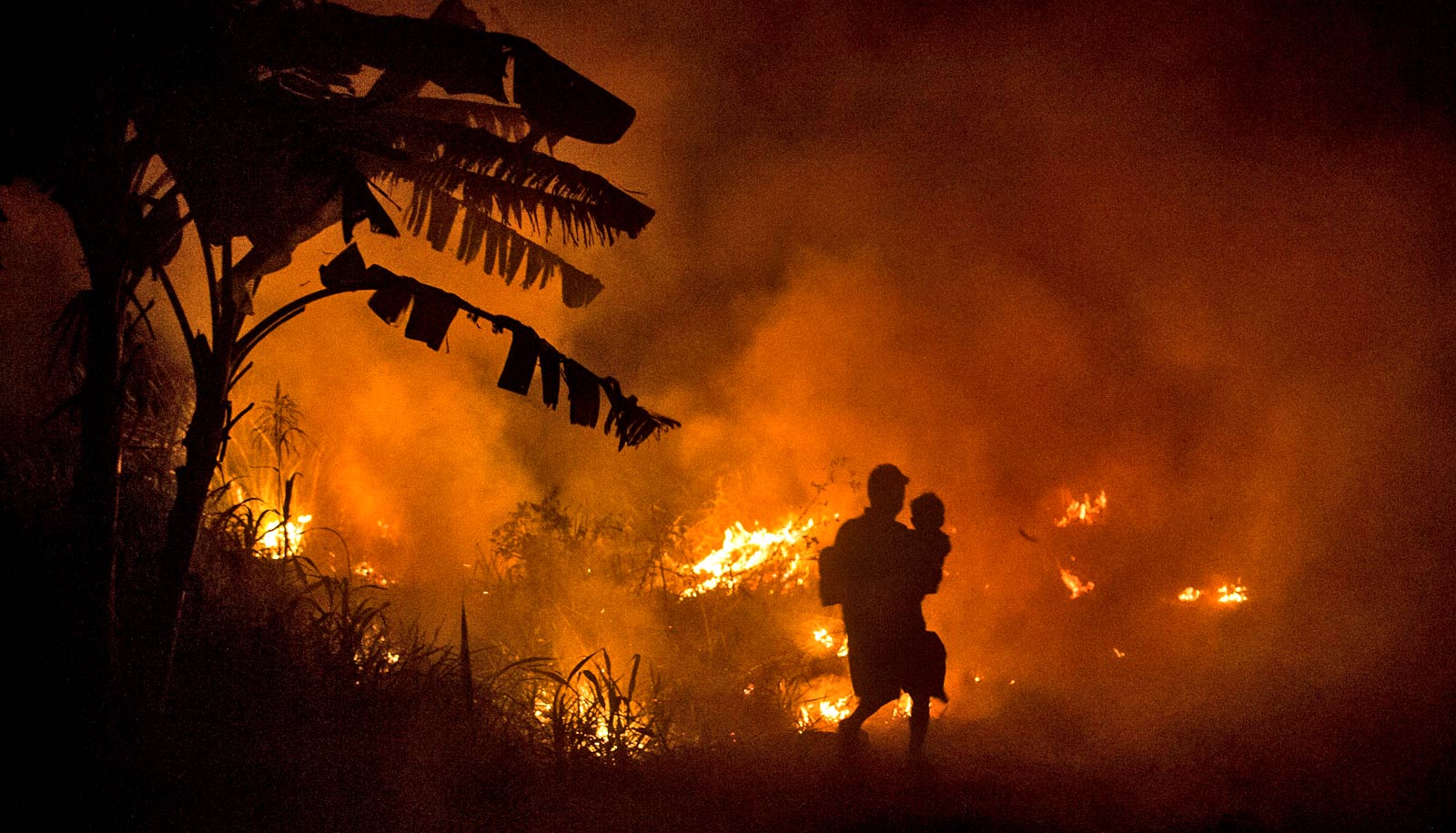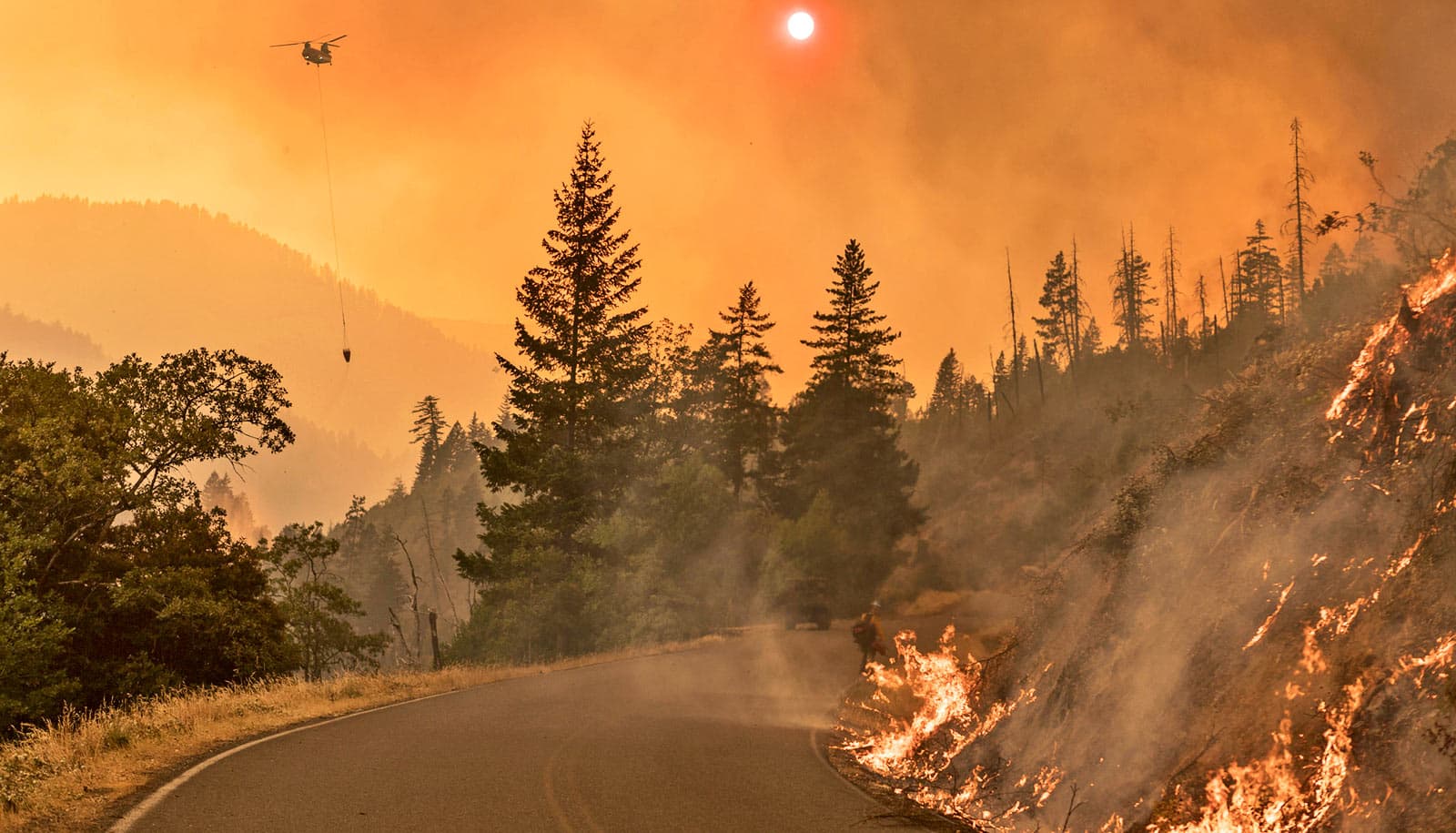Forest fires in Indonesia stunted the growth of children who were exposed to smoke while in the womb, research finds.
In 1997, which was an abnormally dry year, fires set to clear land primarily for oil palm plantations in Indonesia spread and burned out of control. Between August and October, when the fires were most intense, they engulfed 11 million hectares (27.2 million acres), causing massive exposure to unhealthy levels of air pollution. That year, this single event generated about 25 percent of global carbon emissions.
The findings, which appear in the Proceedings of the National Academy of Sciences, show that prenatal exposure to the forest fire haze led to a statistically significant 1.3 inches decrease in children’s expected height at age 17.
Irreversible damage
“Because adult height is associated with income, this implies a loss of about 3 percent of average monthly wages for approximately one million Indonesian workers born during this period,” the authors write.
“While previous research has drawn attention to the deaths caused by the forest fires, we show that survivors also suffer large and irreversible losses. Human capital is lost along with natural capital because of haze exposure.”
“This disadvantage is impossible to reverse,” says coauthor Subhrendu Pattanayak of the Duke University Sanford School of Public Policy.
After conducting cost-benefit analyses, the authors conclude the long-term human capital losses exceed the short-term financial benefits associated with using fire to clear land for the oil palm industry.
“There are ways to eliminate these fires that are not that expensive, so this seems a very shortsighted way to develop and grow an economy,” Pattanayak says.
How to avoid these outcomes
To conduct the study, researchers examined data for 560 affected children who were in utero or in the first six months of life at the time of the fires, combining mothers’ exposure to the fires with longitudinal data on nutritional outcomes, genetic inheritance, climatic factors, and various sociodemographic factors.
The authors conducted a series of robustness checks and confirmed high levels of pollution in later years, geographic factors, an indirect effect of severe air pollution on a family’s ability to work and to earn income, and overall reductions in food consumption during the months of the forest fire did not drive their findings.
After documenting the negative effects of the fires on health and well-being, the authors went on to conduct a series of cost-benefit analyses to determine whether spending to avoid such outcomes would be fiscally justifiable.
Collectively, the analyses showed social net benefits from using fire to clear for oil palm are lower than social net benefits of clearing using mechanical means, stronger enforcement of fire bans, and better fire suppression efforts.
Because oil palm growers would be unwilling to bear the higher costs of mechanical clearing, the authors recommend Indonesia pursue more effective fire bans, fire suppression, and moratoriums on oil palm to protect natural and human capital.
Researchers from the National University of Singapore contributed to the study.
Source: Duke University



